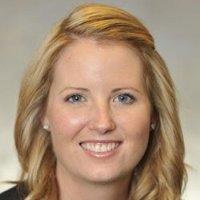Adrian Walrath from the Investment Industry Association of Canada explains how IIROC-regulated firms have been handling the CRM2 transition

With the first wave of new fee and performance reports set to be sent out to clients this month, we caught up with Adrian Walrath, an Assistant Director with the Investment Industry Association of Canada (IIAC), to find out how, specifically, IIROC-regulated firms have been handling the transition to new-look statements.
“The vast majority of IIROC dealers are ahead of schedule in terms of providing clients with the CRM2 reports,” Walrath says. “The required timeline to be sending the new reports is July 2017 and most firms are intending to provide reports this January, which is seven months ahead of schedule.”
Walrath believes that firms who have completed their first set of new reports have taken away some of the ‘heavy lifting’ associated with the implementation of CRM2. For most firms, the next step has been preparing clients for the new information and data sets that they’re going to have access to. “Most IIROC firms are proactively reaching out to clients to make sure they are aware these reports are coming out this month,” Walrath says. “It’s important that clients are looking for these reports and know about the fees and performance related information that will be included, and the general move to greater transparency.”
Despite all efforts to prepare clients for the change, there will undoubtedly be many who have questions, and possibly complaints, about what they see when they open their new-look reports. In most cases, it will be down to the advisor to explain how fee and performance reports are generated and why, if at all, the numbers and amounts involved cause a surprise.
“IIROC firms understand that the touchpoint between them and the reports is the advisor,” Walrath says. “So, firms have been working with their advisors to make sure they understand the new rules and formulas, can answer all of the client questions they might receive, and are able to explain the services the firm and the advisor provides.”
“It’s too early to say how clients have been responding to the educational process, because the reports are not out yet, but it will be interesting to see how they react to the work and effort that’s been put in to increase transparency.”
What is clear is that advisors are going to be the first point of contact when clients query how much they’re paying for financial services. For many advisors, learning how to articulate the value they bring to their clients' finances will be an important factor in the post CRM2 world.
“Many advisors are providing different services so there isn’t a standard checklist that each advisor can say they do,” Walrath says. “Some of the ways we think IIROC advisors add value include making asset allocation recommendations, helping clients maximize tax efficiencies, advising whether a security should be in a RRSP or a TFSA, and providing financial planning services. Advisors also help clients manage emotional highs and lows, like Brexit and Trump. When there are market surprises, an advisor should be there to help manage those situations.”

Related stories:
Are your clients prepared for the new wave of reports?
CRM2 rules spur pay-for-performance model adoption
“The vast majority of IIROC dealers are ahead of schedule in terms of providing clients with the CRM2 reports,” Walrath says. “The required timeline to be sending the new reports is July 2017 and most firms are intending to provide reports this January, which is seven months ahead of schedule.”
Walrath believes that firms who have completed their first set of new reports have taken away some of the ‘heavy lifting’ associated with the implementation of CRM2. For most firms, the next step has been preparing clients for the new information and data sets that they’re going to have access to. “Most IIROC firms are proactively reaching out to clients to make sure they are aware these reports are coming out this month,” Walrath says. “It’s important that clients are looking for these reports and know about the fees and performance related information that will be included, and the general move to greater transparency.”
Despite all efforts to prepare clients for the change, there will undoubtedly be many who have questions, and possibly complaints, about what they see when they open their new-look reports. In most cases, it will be down to the advisor to explain how fee and performance reports are generated and why, if at all, the numbers and amounts involved cause a surprise.
“IIROC firms understand that the touchpoint between them and the reports is the advisor,” Walrath says. “So, firms have been working with their advisors to make sure they understand the new rules and formulas, can answer all of the client questions they might receive, and are able to explain the services the firm and the advisor provides.”
“It’s too early to say how clients have been responding to the educational process, because the reports are not out yet, but it will be interesting to see how they react to the work and effort that’s been put in to increase transparency.”
What is clear is that advisors are going to be the first point of contact when clients query how much they’re paying for financial services. For many advisors, learning how to articulate the value they bring to their clients' finances will be an important factor in the post CRM2 world.
“Many advisors are providing different services so there isn’t a standard checklist that each advisor can say they do,” Walrath says. “Some of the ways we think IIROC advisors add value include making asset allocation recommendations, helping clients maximize tax efficiencies, advising whether a security should be in a RRSP or a TFSA, and providing financial planning services. Advisors also help clients manage emotional highs and lows, like Brexit and Trump. When there are market surprises, an advisor should be there to help manage those situations.”

Related stories:
Are your clients prepared for the new wave of reports?
CRM2 rules spur pay-for-performance model adoption



